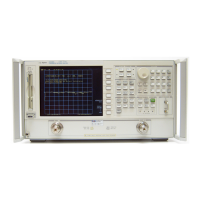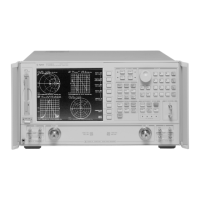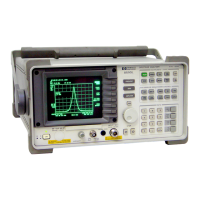10-20 Chapter 10
Service Key Menus and Error Messages
Service Key Menus
Analog Bus
To access the analog bus, press .
Description of the Analog Bus The analog bus is a single multiplexed line that
networks 31 nodes within the instrument. It can be controlled from the front panel, or
through GPIB, to make voltage and frequency measurements just like a voltmeter,
oscilloscope, or frequency counter. The next few paragraphs provide general information
about the structure and operation of the analog bus. See “Analog Bus Nodes” on page 10-22
for a description of each individual node. Refer to the “Overall Block Diagram” in Chapter
4 , “Start Troubleshooting Here” to see where the nodes are located in the instrument.
The analog bus consists of a source section and a receiver section. The source can be the
following:
• any one of the 31 nodes described in “Analog Bus Nodes” on page 10-22
• the A14 fractional-N VCO
• the A14 fractional-N VCO divided down to 100 kHz
The receiver portion can be the following:
• the main ADC
• the frequency counter
When analog bus traces are displayed, frequency is the x-axis. For a linear x-axis in time,
switch to CW time mode (or sweep a single band).
The Main ADC The main ADC is located on the A10 digital IF assembly and makes
voltage measurements in two ranges. See “Analog In Menu” on page 10-21 for more
information.
The Frequency Counter The frequency counter is located on the A14 assembly and can
count one of three sources:
• selected analog bus node
• A14 fractional-N VCO (FRAC N)
• A14 fractional-N VCO divided down to 100 kHz (DIV FRAC N) (frequency range is
100 kHz to 16 MHz)
The counts are triggered by the phase lock cycle; one at each pretune, acquire, and track
for each bandswitch. (The service mode, SOURCE PLL, must be ON for the counter to be
updated at each bandswitch). The counter works in swept modes or in CW mode. It can be
used in conjunction with for troubleshooting phase lock and source
problems.
To read the counter over GPIB, use the command OUTPCNTR.
Notes
• The display and marker units (U) correspond to volts.
• Nodes 17 (1st IF) and 24 (2nd LO) are unreliable above 1 MHz.
